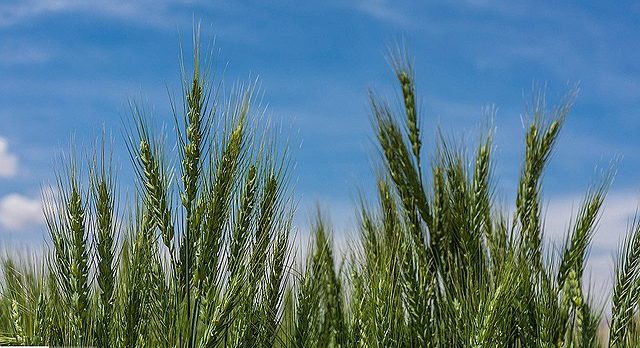Iraqi-Syrian agricultural ties could improve after a bilateral meeting in Damascus, Syria on August 25, 2024 outlined regional agronomic cooperation.
Since 2022, the existing four-nation agreement with Jordan and Lebanon has been seeking to streamline regional agricultural systems. Its focus has been in animal quarantine, certificates of origin unification and agricultural trade duty reduction on crops such as wheat.
For the Damascus meeting between the Agriculture ministries of Iraq and Syria, focus was achieving integration in climate and agricultural trade.
Iraqi-Syrian Integration in Climate
Regarding climate co-operation, Syria’s Minister of Agriculture, Muhammed Hassan Qatana mentioned the ongoing Iraqi-Syrian desert rehabilation scheme.
In the scheme, the two countries have been buffering areas where sand storms have regularly damaged.
On biodiversity, there are rehabilitation projects in the two countries’ pastureland as well as ongoing land reclamation in degraded areas.
Seedling Exchanges
Still on pastures, the two nations will produce and exchange seedlings with better animal forage yields than the existing.
This exchange recalls a four-nation meeting in September 2022 in Jordan, where the then Agriculture Minister of Iraq had recommended active forage production.
Besides, the minister had championed joint animal-related projects such as livestock breeding to bring strong regional stock.
Far-Reaching MoU
Further on in March 2023, Jordan, Syria, Lebanon and Iraq had inked a memorandum of understanding (MoU) on agricultural and trade integration.
The far-reaching MoU added new tenets to the 2022 agreement, including joint wildfire combating efforts and regional forestry management.
Collaboration would also extend to veterinary vaccinations and livestock health projects. These initiatives would expand across the region that is famous for its camel, sheep, goat and cattle population. Iraq, for instance, has over 1,050,000 camels and a goat stock exceeding 1.5 million head, hence the importance of the sector.
In short, the late August 2024 joint Iraqi-Syrian meeting in Damascus could foster further agricultural cooperation in the Levant. To learn more about agriculture in Syria and Iraq, here are a few statistics.
Iraqi-Syrian Agriculture Statistics
Iraq and Syria are both key producers of grains, primarily barley, wheat, rice and maize. Wheat topped crop production in 2022 at 2,764,692 tonnes in Iraq and 1,551,605 tonnes in Syria, according to FAOSTAT. Besides, farmers in the two countries grow sugarcane and irrigate cash crops such as animal fodder, cotton and tobacco. Apart from irrigated zones, crop production in rain-dependant regions vary sharply year by year with prevailing rain patterns. Hence, animal keeping serves as an alternative agricultural livelihood.
How important is agriculture in Syria?
20 in every 100 people in Syria or 20% of the population works in the agricultural sector. This portion of the population depends on cultivating crops like cotton, wheat and barley. Agricultural land (including forestry), at 6.5 million hectares, occupies 32.8% of Syria’s mostly desert landmass of 18.5 million hectares.
What part of Iraq’s landmass is under agriculture?
The Food and Agriculture Organization (FAO) states that Iraq has about 27% of land suitable for agriculture. This is equal to around 11.9 million hectares. Out of this acreage, 8 million hectares are under farming or 67% of the total cultivable landmass. This acreage further swings year-in-year-out depending on the rain patterns, averaging 4 million hectares a year.
Which livestock emanate from Iraq and Syria?
According to FAO, 30% of Syria’s total agriculture turnover comes from livestock production. The head count of animals per household matters as a show of wealth. Between 1960 and 1998, Syria had 4,035,000 sheep at the lowest point (1960-65) and 15,424,000 at the highest point (1998). FAO data also shows that the goat population reached its peak in 1998 at 931,000 head. Iraq, on the other hand, depends for 30-40% of its agricultural turnover from livestock production. Numbers here also matter as wealth indicator. In 2010, the sheep population was 18.6 million, followed by goats at 1.89 million head and then cattle at 1.43 million. This data is courtesy of the University of Basrah.
